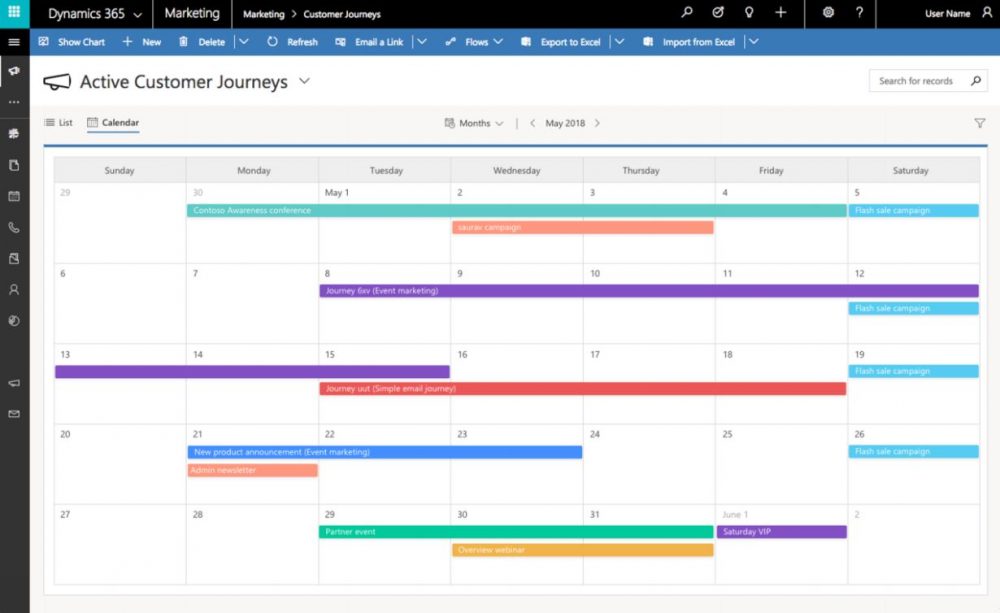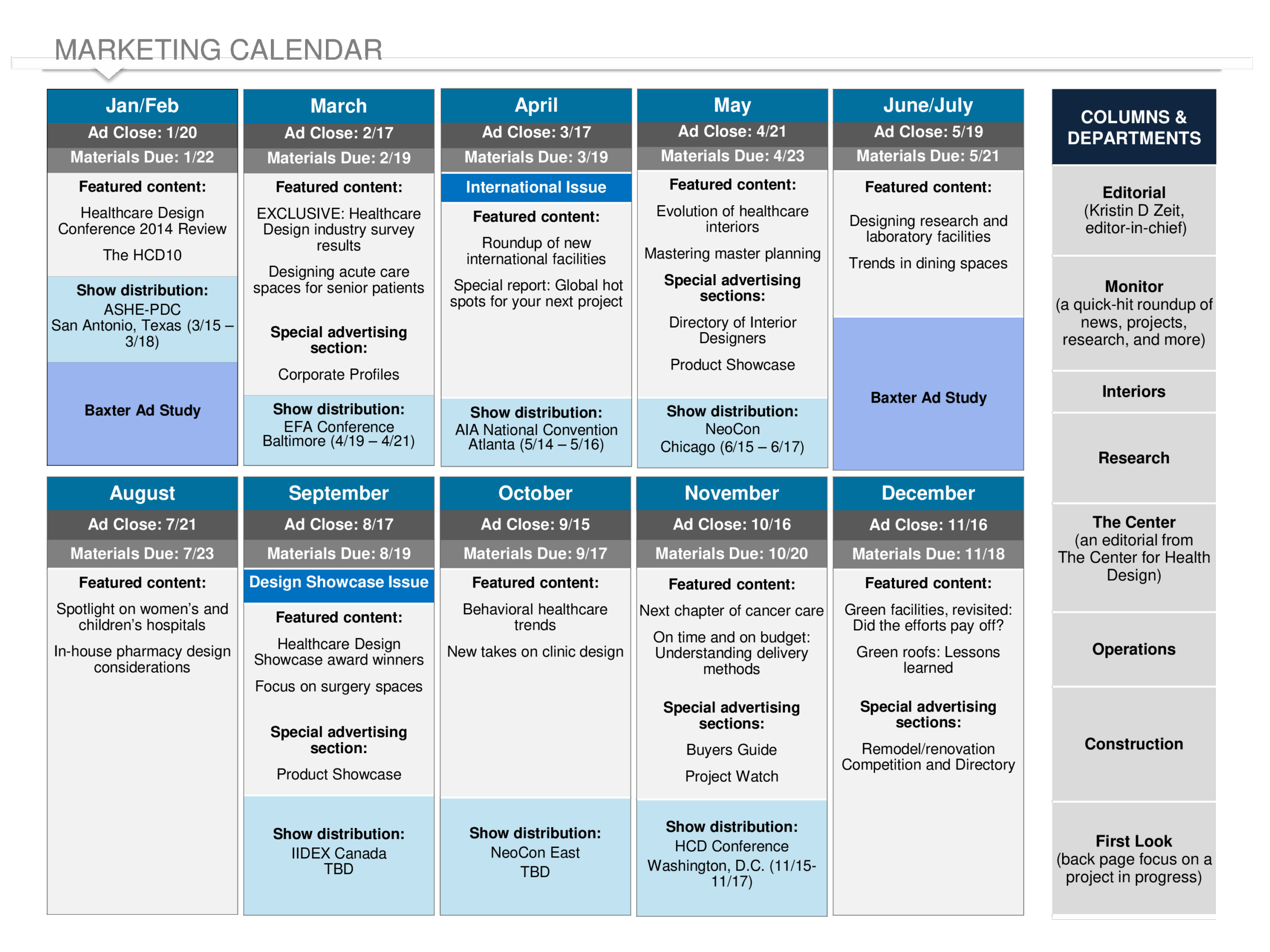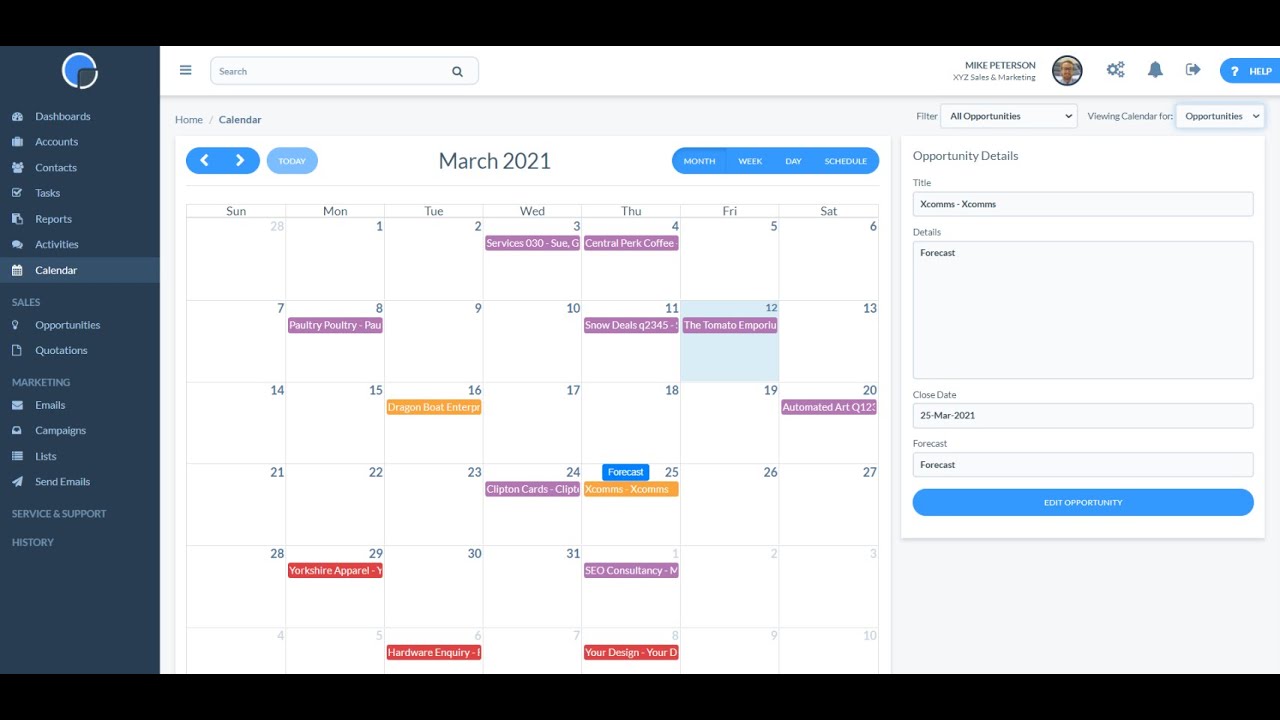
Introduction: The Power of Synergy
In today’s fast-paced digital landscape, businesses are constantly seeking a competitive edge. Two powerful strategies consistently emerge as top contenders: Customer Relationship Management (CRM) and Content Marketing. Alone, each is a force to be reckoned with. However, when these two titans of the marketing world join forces, the results can be truly transformative. This article delves into the dynamic relationship between CRM and content marketing, exploring how they can be leveraged together to drive explosive growth, foster deeper customer relationships, and ultimately, boost your bottom line.
We’ll unpack the core concepts of each strategy, examine their individual strengths, and, most importantly, demonstrate how they can be integrated to create a synergistic marketing powerhouse. Prepare to discover how to personalize customer experiences, optimize your content strategy, and measure the true impact of your marketing efforts.
Understanding CRM: The Heart of Customer Relationships
At its core, Customer Relationship Management (CRM) is more than just a software solution; it’s a philosophy. It’s about understanding your customers, their needs, and their behaviors. It’s about building lasting relationships that go beyond transactional interactions. A robust CRM system acts as the central nervous system of your business, collecting and organizing crucial customer data.
What is CRM?
CRM software is designed to help businesses manage and analyze customer interactions and data throughout the customer lifecycle, with the goal of improving business relationships with customers, assisting in customer retention, and driving sales growth. Think of it as a digital hub that consolidates all customer-related information in one accessible location. This includes:
- Contact Information: Names, addresses, phone numbers, email addresses, and social media profiles.
- Interaction History: Records of all communication, including emails, phone calls, live chats, and social media interactions.
- Purchase History: Details of past purchases, including products or services bought, dates, and amounts.
- Preferences and Interests: Information gathered through surveys, website behavior tracking, and other sources.
- Sales Pipeline: Tracking of leads and opportunities through the sales process.
Benefits of Implementing a CRM System
The advantages of implementing a CRM system are numerous and far-reaching. Here are some of the key benefits:
- Improved Customer Relationships: By providing a 360-degree view of each customer, CRM empowers your team to personalize interactions and build stronger relationships.
- Increased Sales: CRM helps sales teams prioritize leads, manage the sales pipeline effectively, and close more deals.
- Enhanced Customer Service: With easy access to customer information, support teams can resolve issues quickly and efficiently, leading to higher customer satisfaction.
- Streamlined Processes: CRM automates many repetitive tasks, freeing up your team to focus on more strategic activities.
- Data-Driven Decision Making: CRM provides valuable insights into customer behavior, allowing you to make informed decisions about your marketing and sales strategies.
- Improved Team Collaboration: CRM ensures that everyone on your team has access to the same customer information, facilitating better collaboration and communication.
The Essence of Content Marketing: Providing Value
Content marketing is a strategic marketing approach focused on creating and distributing valuable, relevant, and consistent content to attract and retain a clearly defined audience — and, ultimately, to drive profitable customer action. It’s about providing something of value to your target audience, earning their trust, and positioning your business as a thought leader in your industry.
What is Content Marketing?
Content marketing encompasses a wide range of formats, including:
- Blog Posts: Articles that provide valuable information, insights, and opinions.
- Videos: Engaging visual content that educates, entertains, or inspires.
- Infographics: Visual representations of data and information.
- Ebooks and Whitepapers: In-depth guides that provide valuable expertise.
- Social Media Posts: Content designed to engage and interact with your audience on social media platforms.
- Podcasts: Audio content that provides information, interviews, and discussions.
- Email Newsletters: Regular updates and valuable content delivered directly to your subscribers’ inboxes.
Benefits of Content Marketing
Content marketing offers a multitude of benefits for businesses of all sizes:
- Increased Brand Awareness: High-quality content helps you reach a wider audience and build brand recognition.
- Improved SEO: Content marketing is a key driver of search engine optimization (SEO), helping you rank higher in search results.
- Lead Generation: Valuable content attracts potential customers and encourages them to provide their contact information.
- Thought Leadership: Content marketing allows you to establish yourself as an expert in your industry.
- Increased Conversions: By providing valuable information and building trust, content marketing can drive more sales and conversions.
- Cost-Effectiveness: Compared to traditional advertising methods, content marketing can be a more cost-effective way to reach your target audience.
The Power Couple: CRM and Content Marketing Working Together
The true magic happens when you integrate your CRM system with your content marketing strategy. This powerful combination allows you to personalize your content, target the right audience with the right message, and measure the effectiveness of your efforts with unprecedented precision.
How CRM Enhances Content Marketing
CRM provides the data and insights needed to create highly targeted and personalized content. Here’s how:
- Audience Segmentation: CRM allows you to segment your audience based on various criteria, such as demographics, purchase history, and website behavior. This enables you to create content that is specifically tailored to each segment’s needs and interests.
- Personalized Content Delivery: With CRM, you can personalize email newsletters, website content, and other marketing materials based on individual customer preferences and behaviors.
- Lead Scoring and Nurturing: CRM can track how leads interact with your content and assign scores based on their engagement. This allows you to prioritize leads and nurture them with targeted content designed to move them through the sales funnel.
- Improved Content Performance Measurement: By integrating your CRM with your content marketing platform, you can track which content is most effective in driving conversions and revenue. This data allows you to optimize your content strategy and focus on what works best.
- Content Personalization Based on Customer Journey: CRM helps you understand where a lead or customer is in their journey (awareness, consideration, decision) and tailor content to meet them at their current stage.
How Content Marketing Enhances CRM
Content marketing fuels the CRM system by providing valuable content that attracts, engages, and converts leads into customers. Here’s how:
- Lead Generation: Content marketing is a powerful lead generation tool. By creating valuable content, you can attract potential customers and encourage them to provide their contact information. This data is then fed into your CRM system.
- Lead Nurturing: Content marketing helps you nurture leads through the sales funnel. By providing targeted content at each stage of the customer journey, you can build trust and move leads closer to a purchase decision.
- Customer Engagement: Content marketing keeps your customers engaged and informed. By providing valuable content, you can encourage repeat business and build customer loyalty.
- Data Collection: Content marketing provides valuable data about your customers, such as their interests, preferences, and behaviors. This data can be used to improve your CRM system and personalize future interactions.
- Building Brand Authority: High-quality content positions you as a thought leader in your industry, which can increase trust and credibility with your audience, which in turn improves conversion rates.
Practical Strategies for Integrating CRM and Content Marketing
Integrating CRM and content marketing is not just a theoretical concept; it’s a practical process. Here are some actionable strategies to get you started:
1. Define Your Target Audiences
Before you start creating content, you need to understand your target audiences. Use your CRM data to segment your audience based on various criteria, such as demographics, industry, job title, purchase history, and website behavior. Create buyer personas that represent each segment, outlining their needs, goals, pain points, and preferred content formats.
2. Map Content to the Customer Journey
The customer journey is the path a customer takes from initial awareness to becoming a loyal customer. Map your content to each stage of the customer journey. For example:
- Awareness Stage: Create content that educates your audience about your industry and introduces your brand. Examples include blog posts, infographics, and social media updates.
- Consideration Stage: Create content that helps your audience evaluate your products or services. Examples include ebooks, whitepapers, case studies, and product demos.
- Decision Stage: Create content that encourages your audience to make a purchase. Examples include testimonials, pricing guides, and special offers.
- Retention Stage: Create content that keeps your customers engaged and encourages repeat business. Examples include newsletters, exclusive content, and customer support articles.
3. Personalize Your Content
Use your CRM data to personalize your content. This can include:
- Personalized Email Campaigns: Send targeted email campaigns based on customer segments, purchase history, and website behavior.
- Personalized Website Content: Display different content on your website based on the user’s segment or past interactions.
- Personalized Social Media Ads: Target your social media ads based on your CRM data.
4. Automate Your Workflows
Use marketing automation tools to streamline your workflows and improve efficiency. For example, you can automate the following:
- Lead Scoring: Automatically score leads based on their engagement with your content.
- Lead Nurturing: Automatically send targeted content to leads based on their stage in the sales funnel.
- Email Marketing: Automatically send personalized email campaigns based on customer behavior.
5. Track and Measure Your Results
Track and measure the results of your CRM and content marketing efforts. Use your CRM and content marketing platforms to track key metrics, such as:
- Website Traffic: Track the number of visitors to your website.
- Lead Generation: Track the number of leads generated.
- Conversion Rates: Track the percentage of leads that convert into customers.
- Customer Acquisition Cost (CAC): Track the cost of acquiring each customer.
- Customer Lifetime Value (CLTV): Track the total revenue generated by each customer over their lifetime.
- Return on Investment (ROI): Calculate the ROI of your content marketing and CRM efforts.
6. Choose the Right Tools
Selecting the right tools is crucial for successful integration. Consider these factors:
- CRM System: Choose a CRM system that offers robust features for contact management, sales automation, and reporting. Popular options include Salesforce, HubSpot CRM, Zoho CRM, and Pipedrive.
- Content Marketing Platform: Select a platform that allows you to create, publish, and manage your content effectively. Options include HubSpot CMS, WordPress, and Contentful.
- Marketing Automation Software: Integrate a marketing automation tool to streamline your workflows and personalize your marketing efforts. HubSpot Marketing Hub, Marketo, and Pardot are excellent choices.
- Integration Capabilities: Ensure that your chosen tools can seamlessly integrate with each other. Look for native integrations or use tools like Zapier to connect your platforms.
Examples of CRM and Content Marketing in Action
Let’s look at some real-world examples of how businesses are successfully integrating CRM and content marketing:
Example 1: SaaS Company
A SaaS company uses its CRM system to segment its audience based on company size and industry. They then create targeted blog posts, ebooks, and webinars that address the specific needs and challenges of each segment. They use their CRM to track which content each lead interacts with, allowing them to nurture leads with personalized email campaigns and move them through the sales funnel. For example, a lead from a small business in the marketing industry might receive a series of emails with links to blog posts and webinars about content marketing strategies specifically tailored for small marketing businesses. The CRM tracks their engagement, and if they download a pricing guide, they are moved to the sales team for a personalized follow-up. This targeted approach results in higher conversion rates and increased customer lifetime value.
Example 2: E-commerce Retailer
An e-commerce retailer uses its CRM system to track customer purchase history and website behavior. They then create personalized product recommendations and email campaigns based on each customer’s past purchases and browsing activity. They also use their CRM to segment their audience based on their stage in the customer journey. For example, new customers might receive a welcome email with a discount code, while existing customers might receive exclusive offers and promotions based on their purchase history. Content marketing, such as blog posts on fashion trends or product reviews, further nurtures customers and encourages repeat purchases. This strategy leads to increased sales, improved customer loyalty, and a higher average order value.
Example 3: Consulting Firm
A consulting firm uses its CRM system to track leads and manage the sales pipeline. They create valuable content, such as whitepapers and case studies, that showcase their expertise and thought leadership. They use their CRM to personalize their content distribution, sending targeted content to leads based on their industry, job title, and stage in the sales process. They also use their CRM to track which leads are most engaged with their content and prioritize them for follow-up. This integrated approach allows them to generate more leads, close more deals, and build stronger relationships with their clients. For example, a lead who downloads a whitepaper on digital transformation might receive a follow-up email with a link to a case study of a successful digital transformation project the firm completed. This tailored approach builds trust and positions the firm as a trusted advisor.
Challenges and How to Overcome Them
While the integration of CRM and content marketing offers significant benefits, it’s not without its challenges. Here are some common hurdles and how to overcome them:
1. Data Silos
One of the biggest challenges is data silos, where customer data is scattered across different systems and not easily accessible. To overcome this:
- Integrate Your Systems: Ensure that your CRM, content marketing platform, and other marketing tools are integrated.
- Centralize Your Data: Use a data warehouse or customer data platform (CDP) to centralize your customer data.
- Establish Data Governance: Implement data governance policies to ensure data accuracy and consistency.
2. Lack of Alignment
Another challenge is a lack of alignment between your sales and marketing teams. To overcome this:
- Foster Collaboration: Encourage regular communication and collaboration between your sales and marketing teams.
- Define Shared Goals: Establish shared goals and metrics to align your sales and marketing efforts.
- Create a Service Level Agreement (SLA): Develop an SLA that outlines the roles and responsibilities of each team.
3. Inconsistent Content
Inconsistent content can damage your brand and confuse your audience. To overcome this:
- Develop a Content Strategy: Create a content strategy that outlines your content goals, target audiences, and content formats.
- Establish a Content Calendar: Use a content calendar to plan and schedule your content.
- Maintain a Consistent Brand Voice: Ensure that your content reflects your brand’s voice and values.
4. Measuring ROI
Measuring the ROI of your CRM and content marketing efforts can be complex. To overcome this:
- Track Key Metrics: Track key metrics, such as website traffic, lead generation, conversion rates, and customer lifetime value.
- Use Attribution Models: Use attribution models to understand how your content is influencing conversions.
- Analyze Your Data: Regularly analyze your data to identify areas for improvement.
The Future of CRM and Content Marketing
The convergence of CRM and content marketing is not just a trend; it’s the future of marketing. As technology continues to evolve, we can expect to see even greater integration and personalization. Here are some emerging trends:
- Artificial Intelligence (AI): AI is already playing a significant role in CRM and content marketing. AI-powered tools can personalize content, automate workflows, and provide valuable insights into customer behavior.
- Hyper-Personalization: Businesses will increasingly personalize their content and interactions based on individual customer preferences and behaviors.
- Voice Search Optimization: With the rise of voice search, businesses will need to optimize their content for voice search queries.
- Video Marketing: Video will continue to be a dominant content format, with businesses using video to engage and inform their audience.
- Data Privacy and Security: Data privacy and security will become even more important, with businesses needing to comply with regulations such as GDPR and CCPA.
Conclusion: Embrace the Synergy
CRM and content marketing are two powerful strategies that, when combined, can drive explosive growth and foster deeper customer relationships. By integrating these two approaches, you can personalize your customer experiences, optimize your content strategy, and measure the true impact of your marketing efforts. Embrace the synergy of CRM and content marketing, and you’ll be well-positioned to thrive in the ever-evolving digital landscape. The ability to understand your customer deeply, coupled with the power of providing valuable content, is a winning formula for sustainable success. Don’t just manage your customers; build relationships, nurture them, and watch your business flourish.


